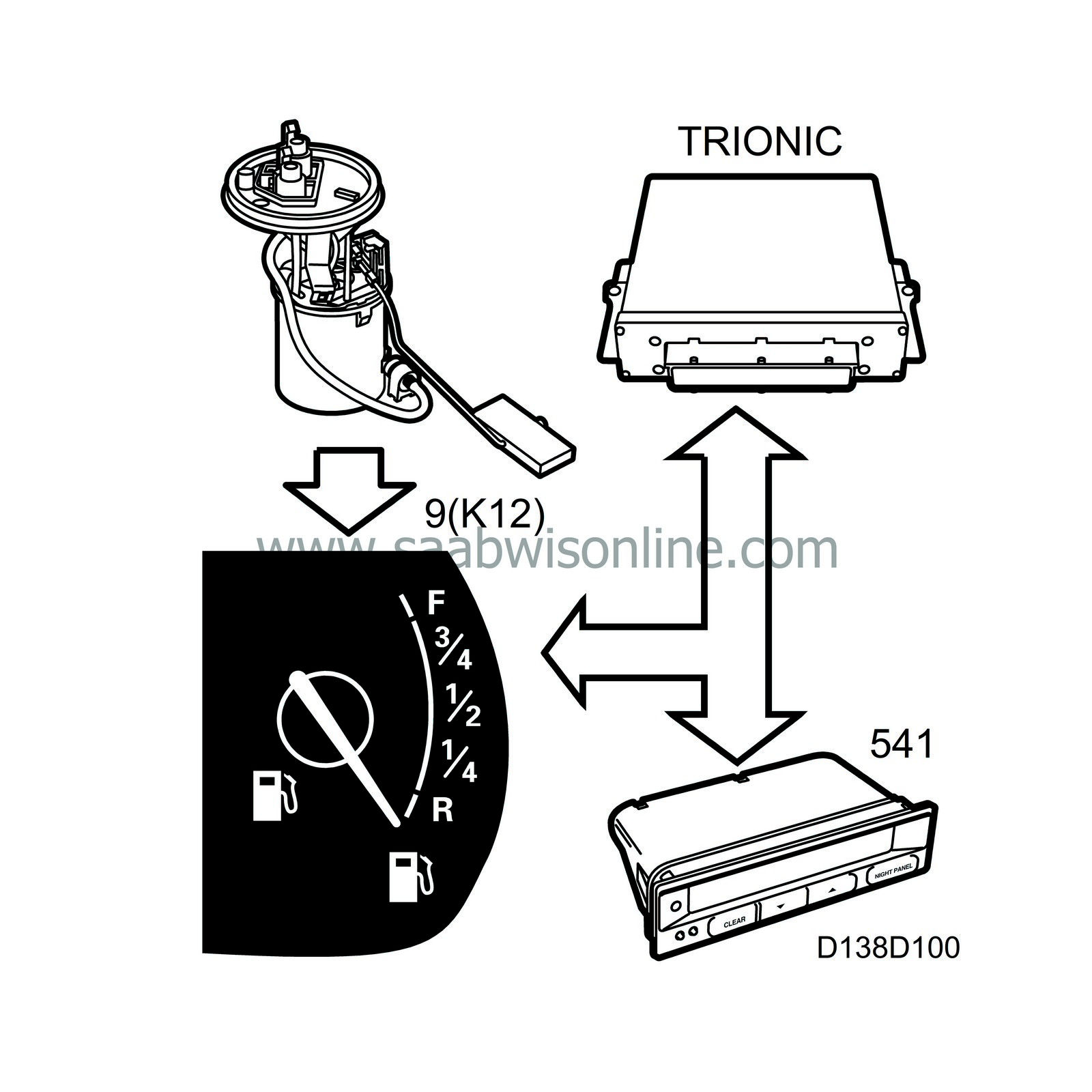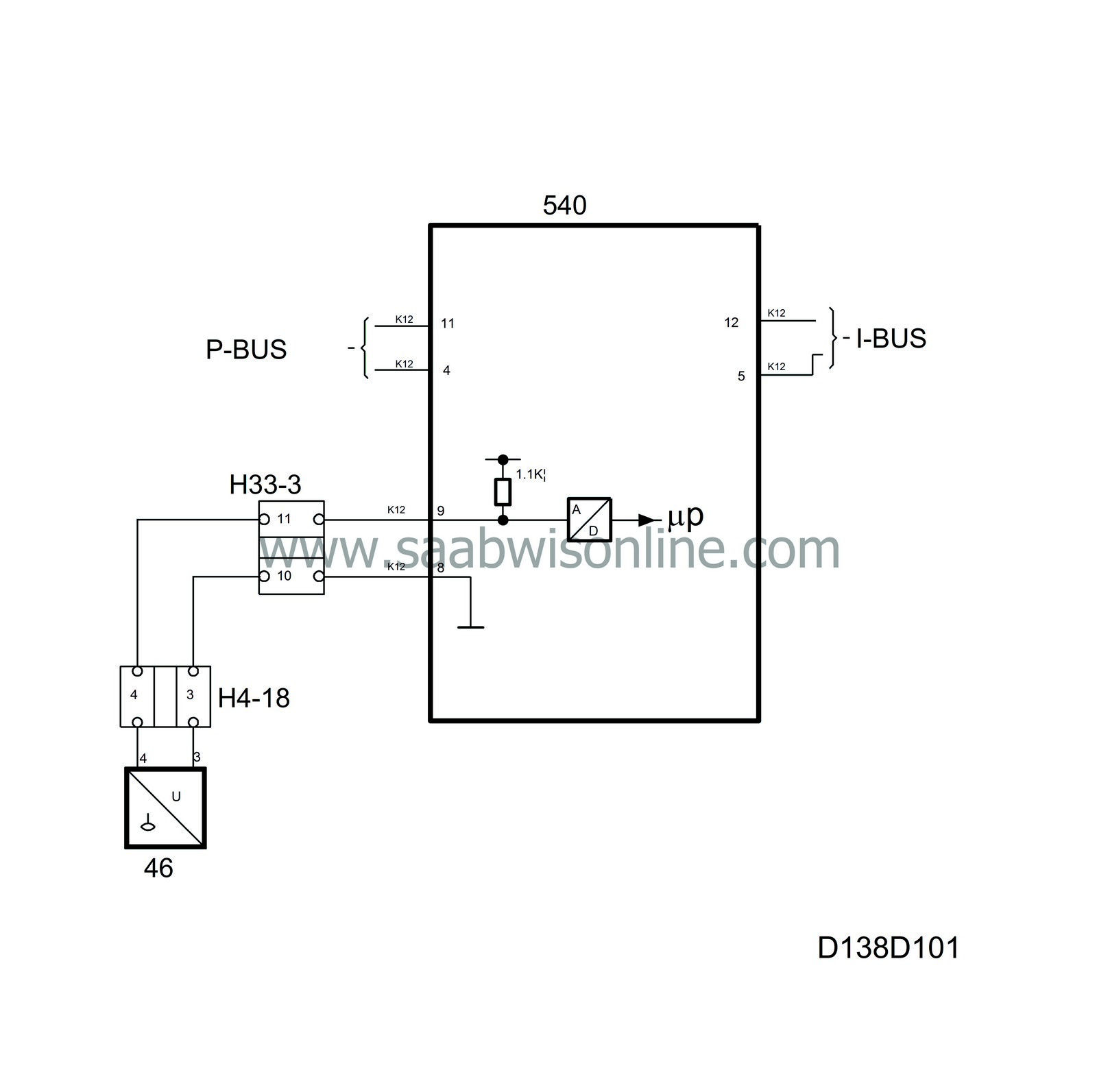Fuel gauge, Trionic T7
| Fuel gauge, Trionic T7 |
The fuel gauge shows the driver how much fuel is in the tank. It consists of a fuel gauge in the main instrument unit and a level sensor in the tank.


The level sensor has a variable resistance, the value of which corresponds to the level of the float in the tank. The resistance increases with the fuel level. In an empty tank, the resistance is 60±2.6 ohms and in a full tank 390±6 ohms (370±6 ohms for US and CA).
The sensor is powered with 12 V from pin 9 (K12) through a 1.1 kohm resistor integrated in the main instrument unit. The sensor is grounded via main instrument unit pin 8 (K12).
The main instrument unit senses the resistance of the sensor and controls the current to the fuel gauge so that the position of the gauge needle corresponds to the sensor's resistance.
To give a more accurate reading at low fuel levels, the main instrument unit's control module switches to measuring fuel consumption when the fuel level in the tank is below 10 litres.
The main instrument unit control module sends information on the fuel level to the buses.
Diagnostics
An open circuit/short circuit sets diagnostic trouble code B1720. The gauge needle indicates 0 litres and the fuel reserve indicator lamp lights up.| Fuel reserve indicator lamp |
When the contents of the fuel tank are down to about 10 litres, the low fuel level lamp comes on. This lamp is supplied with current in the main instrument unit and when it should light up it is grounded by the main instrument unit's control module.
The main instrument unit lights this lamp for 3 seconds when the ignition is switched on.
| Fuel consumption |
The Trionic T7 transmits Fuel Consumed Since on the bus, unit ml.
The main instrument unit uses this information to control the fuel gauge below 10 litres.


